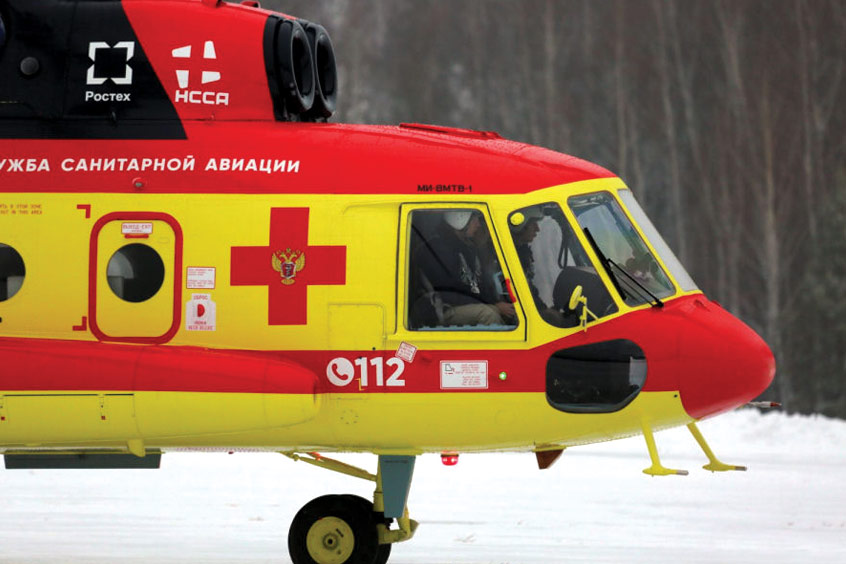ACE 2026 - The home of global charter.
 The bimonthly news publication for aviation professionals.
The bimonthly news publication for aviation professionals.

Russia's National Air Ambulance Service (NSSA) has taken delivery of three Ansats and three Mi-8MTV-1 from Russian Helicopters, manufactured by the Kazan Helicopter Plant and assigned them to various regions of the country.
The helicopters have been supplied under a large contract for 66 aircraft, which was signed last summer at the MAKS-2021 air show when the first helicopter was handed over. So far the medical service has received 14 helicopters under this agreement. The total fleet of the NSSA is currently 22 aircraft units, comprising 11 Ansats and 11 Mi-8MTV-1.
“The development of medical aviation improves the quality, speed and availability of medical services, especially in remote areas," says Oleg Evtushenko, executive director of Rostec State Corporation, Russian Helicopters' holding company. "Deliveries of modern helicopters for the NSSA have gained a good pace and shipments are being made regularly. Another six vehicles that were transferred to the NSSA will serve in various regions of the country: the Ansats have gone to Veliky Novgorod, Beslan and Orel, and the Mi-8MTV-1 to Novosibirsk, Petrozavodsk and Barnaul.”
The air ambulance helicopters are being equipped with medical interiors for transporting patients; the Ansats can be equipped with incubators for newborns or isolation units for patients with coronavirus.
“Today Kazan Helicopter Plant is a key supplier of helicopters for the National Air Ambulance Service, and by the end of this year we will supply a total of 66 helicopters under existing contracts, comprising 29 Mi-8MTV-1 and 37 Ansats. Many years of experience in the use of these helicopters in medical aviation allow us to talk about their versatility and ease of operation. Thus, the Mi-8 series helicopters are often used in remote and hard-to-reach regions of the country, while the Ansats have proven themselves in urban areas and in situations where it is necessary to evacuate directly from the highway in case of an accident,” adds Russian Helicopters CEO Nikolai Kolesov.
“For PSB Leasing, supporting modern high-tech aviation products is one of our priorities," adds general director Sergey Ogienko. "Thanks to the joint work of all participants in this project, JSC NSSA is getting into operation new equipment that will contribute to the development of the entire air ambulance system of the country.”
The Ansat light helicopter is designed to transport one patient accompanied by two doctors and is equipped with an electronic indication system, the so-called glass cockpit. Its design allows operators to quickly transform the helicopter into both cargo and passenger versions with the ability to transport up to seven people. The Ansat can be used in the temperature range from -45 to +50 degrees Celsius and can also be operated in high mountains. It is capable of speeds up to 275 km/h and its maximum flight range is up to 505 kilometres. The helicopter is very convenient when operating in urban conditions.
As well as being prepared for the installation of medical interiors, multi-purpose helicopters Mi-8MTV-1s are equipped with 22 seats and additional external and internal fuel tanks. The helicopter has improved flight performance due to a more powerful power plant, improved avionics and changes in the fuselage design. It has a maximum speed of 250 km/h, a flight range of 1,150 km and can be used in almost all climatic conditions. The design and equipment of the Mi-8MTV-1 helicopter allows it to be operated autonomously on unequipped sites.
In 2021, NSSA's Russian helicopters performed 5,020 sorties and rescued over 6,000 patients.